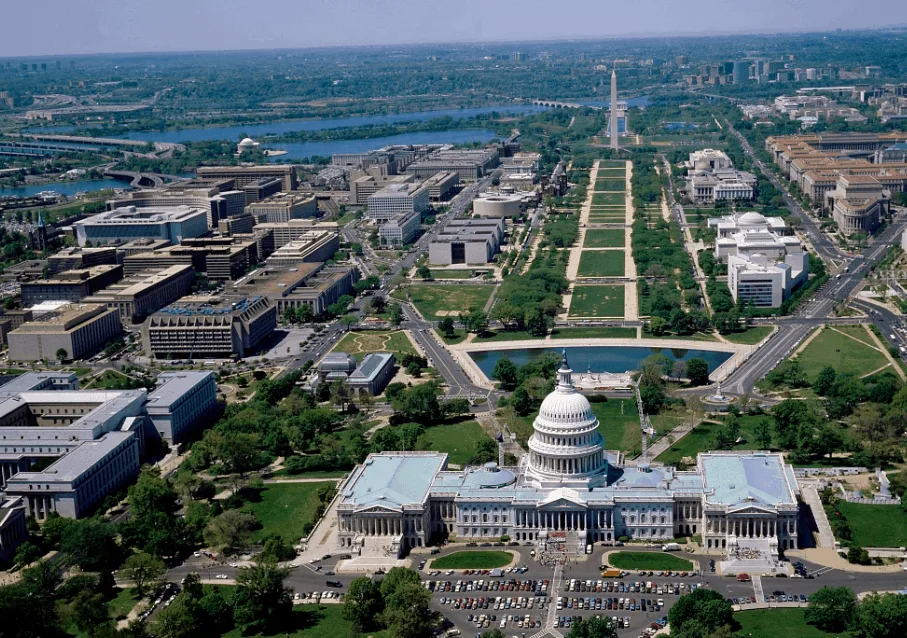This landscaped park contains dozens of important landmarks of the United States of America and welcomes millions of visitors every year.
In this post, you’ll discover the ultimate list of facts about the National Mall, one of the most popular places in Washington D.C.
1. What is the National Mall?
The National Mall is a landscaped park in Washington D.C. that is an official member of the United States National Park System.
The term is used to define the area that includes the neighboring West Potomac Park including the Tidal Basin and Jefferson Memorial, and the Constitution Gardens to the southwest.
The “National mall” is sometimes used to define the entire area between the Lincoln Memorial and the Capitol Building with the Washington Monument in the middle.

2. Where is the National Mall located?
The National Mall is located along two major avenues in the capital of the United States, Washington D.C.
One of the avenues is “Independence Avenue,” (south) the other one is “Constitution Avenue” (north). In the west, it ends at the Lincoln Memorial and in the east at the Capitol Building.
This is the official area as included in the register of the United States National Park System.
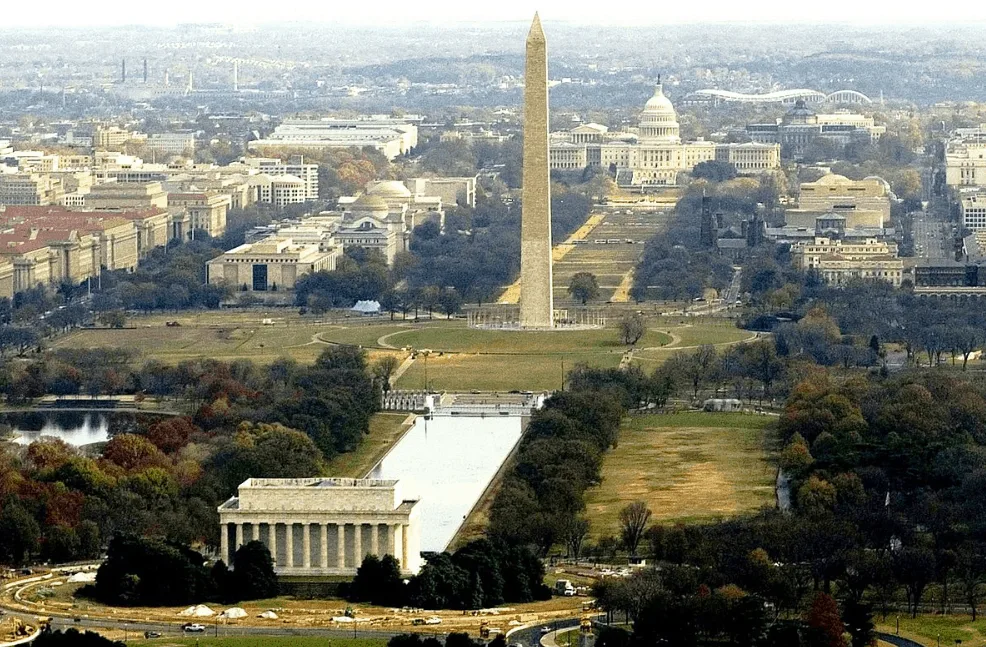
3. The original plan had a huge avenue
The first plan for the urbanization of Washington D.C. was created in 1791 by Major Pierre Charles L’Enfant, a French engineer who fought in the Continental Army during the American Revolutionary War.
This plan was known as the “L’Enfant Plan” and included a drawing of the future National Mall.
His plan included a huge avenue with a garden running symmetrically next to it and was approximately 1 mile (1.6 km) in length and 400 feet (120 m) wide.
This “grand avenue” was never built.
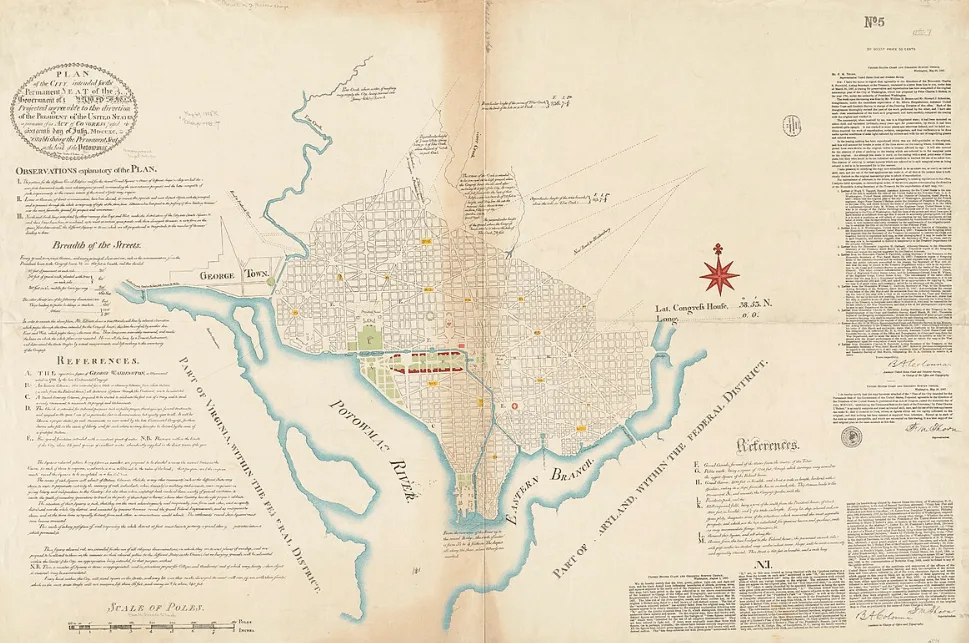
4. Why is it called the National Mall?
During the creation of the L’Enfant Plan, there wasn’t a name for the location of the National Mall yet. It wasn’t until 1802 that the first reference was made in a newly created plan by Matthew Carey, an Irish-born American publisher, and economist.
He referred to it as the “National Mall” about a famous street in London, The Mall, which is located just next to Buckingham Palace. In the 18th century, this was a very popular place for Britain’s elite to roam around.
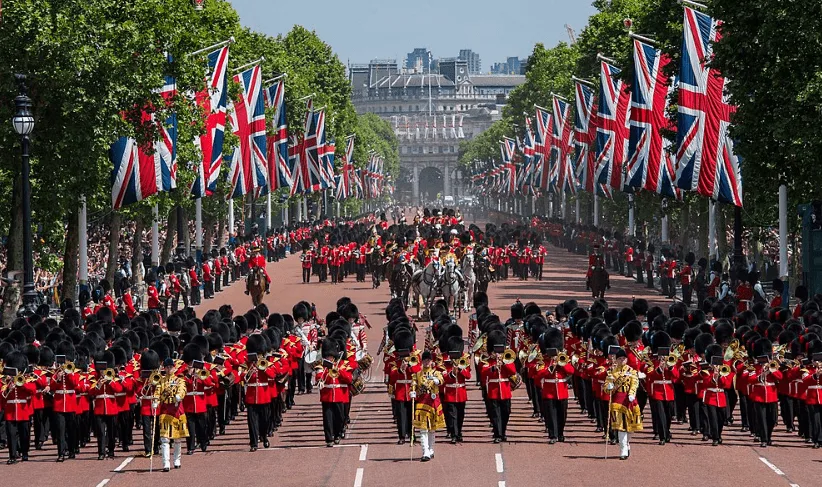
5. This is the oldest building in the National Mall
The oldest building that still stands in the National Mall is the Smithsonian Institution Building, also referred to as “The Castle,” this is for the simple reason that it looks like a castle.
It houses the Smithsonian Institution’s administrative offices and information center and was built with Seneca red sandstone in the Gothic and Romanesque revival styles.
It was completed in 1855 which makes it the oldest building in the National Mall.
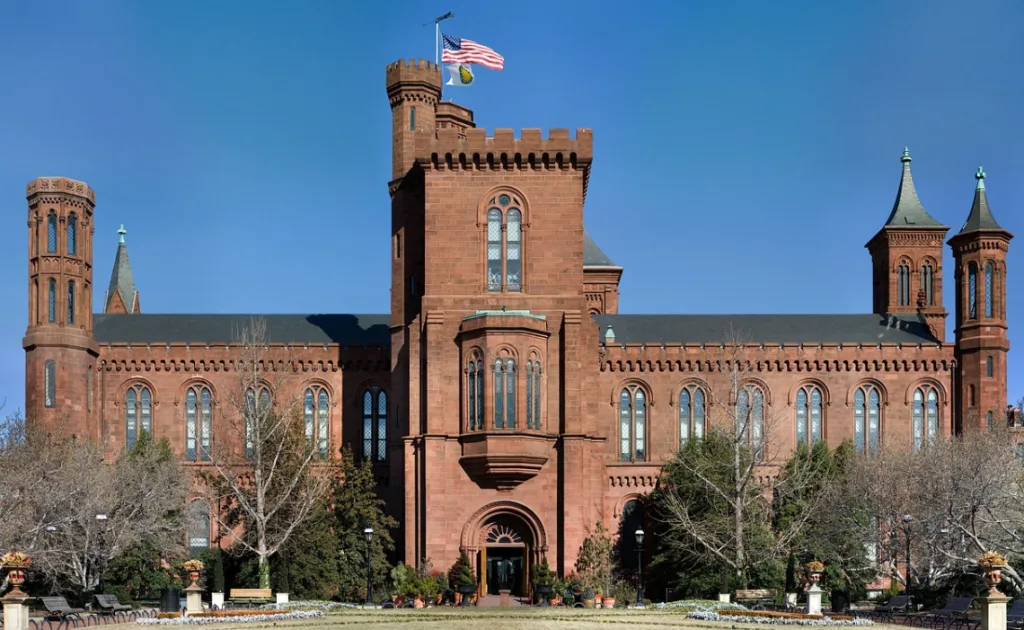
6. The first landscaped plan was created in the 1850s
In the early 1850s, a landscaped plan was created for the National Mall. It was landscaping architect and horticulturist Andrew Jackson Downing that created it and the plan was referred to as “The Downing Plan.”
Downing is considered to be the most important pre-Civil War landscaping architect.
One of the most interesting facts about the National Mall is that this Downing Plan was used by federal agencies for over a century to create several parks within the National Mall.
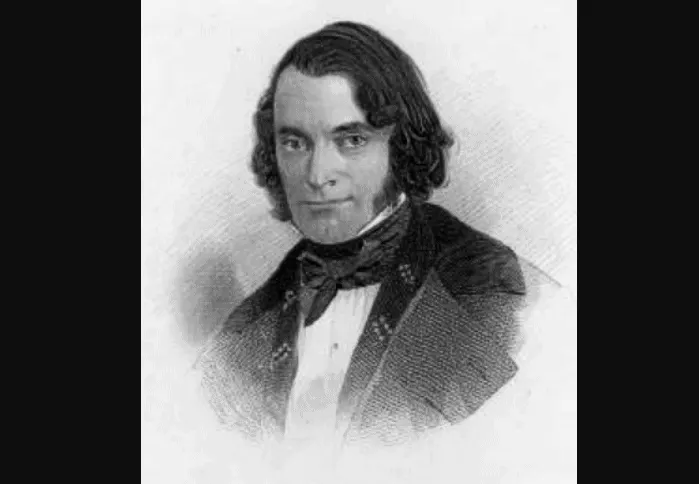
7. The National mall was divided into several grounds
One thing that Downing did was divide the National Mall into specific grounds. Below is an overview of those grounds:
- The Monument Grounds
- The Agricultural Grounds
- The Smithsonian Grounds
- The Armory Square
- The Public Grounds
Here is a drawing of Downing’s Plan with the different grounds in the late 19th century:
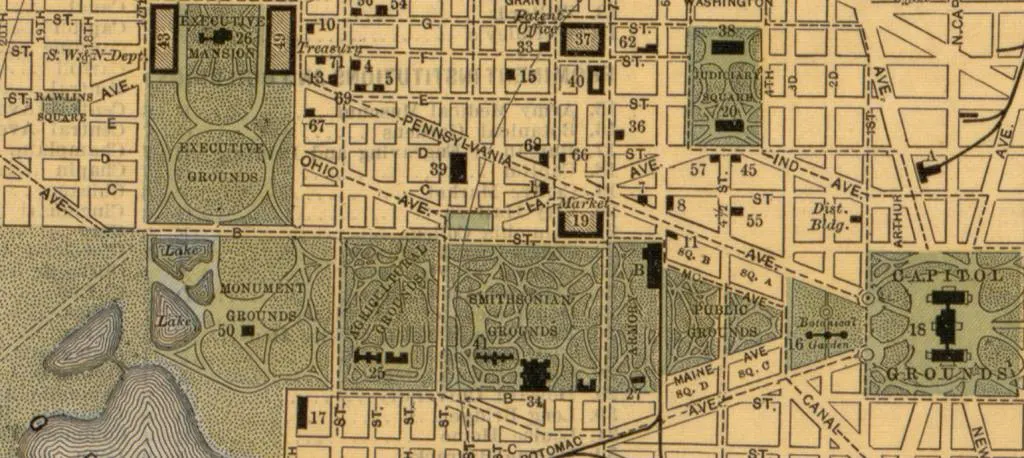
8. The National Mall played an important role during the Civil War
In the early 1850s, the Armory was constructed on the grounds of the National Mall.
When the American Civil War broke out though, this building was transformed into a hospital. It served as a hospital between 1862 and 1865.
During this period, the building was referred to as the Armory Square Hospital and was used to take care of wounded Union Soldiers.
After the war, it was used as a storage facility and later housed the offices of the United States Fish Commission (after 1903, Bureau of Fisheries). It was demolished in January 1964.
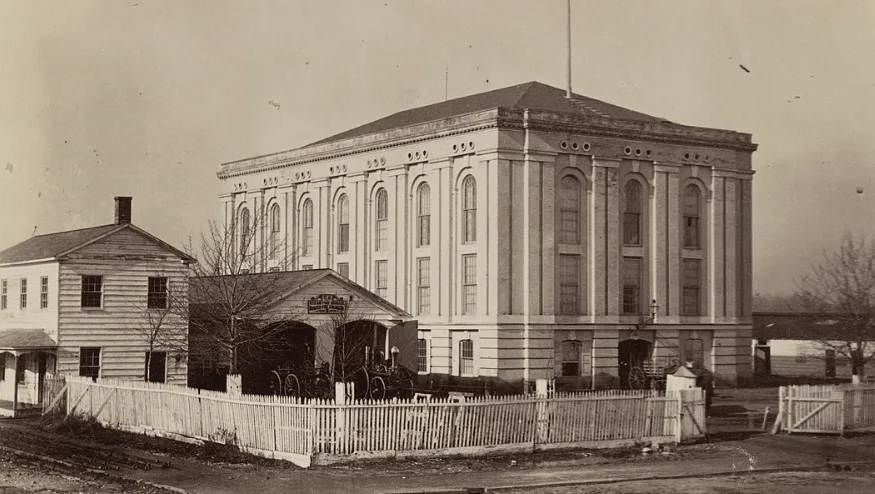
9. The final plan was created in 1901
In the early 20th century, a special commission was created to improve the National Mall area and the monumental core of Washington D.C.
This commission was called the McMillan Commission created a plan that was basically an extension of the L’Enfant plan of about a century earlier.
The National Mall was considered to be the centerpiece of the McMillan Plan as you can see on the original plan below:
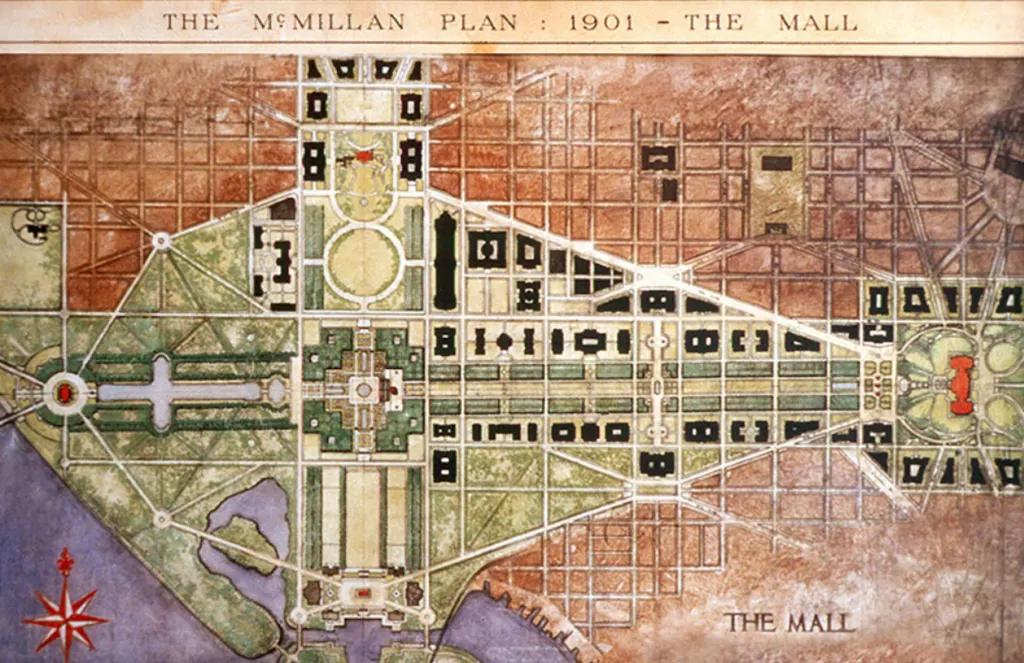
10. The National Mall used to be home to a Triceratops
The fiberglass triceratops named “Uncle Beazley” used to be located in the National Mall after it was donated to the Smithsonian Institution by the Sinclair Oil Corporation.
It was created for the 1964 World Fair by American Sculptor Louis Paul Jonas and stood in the park between 1970 and 1994.
Uncle Beazley was moved, however, and is now located at the National Zoological Park (the National Zoo) in Northwest Washington, D.C.
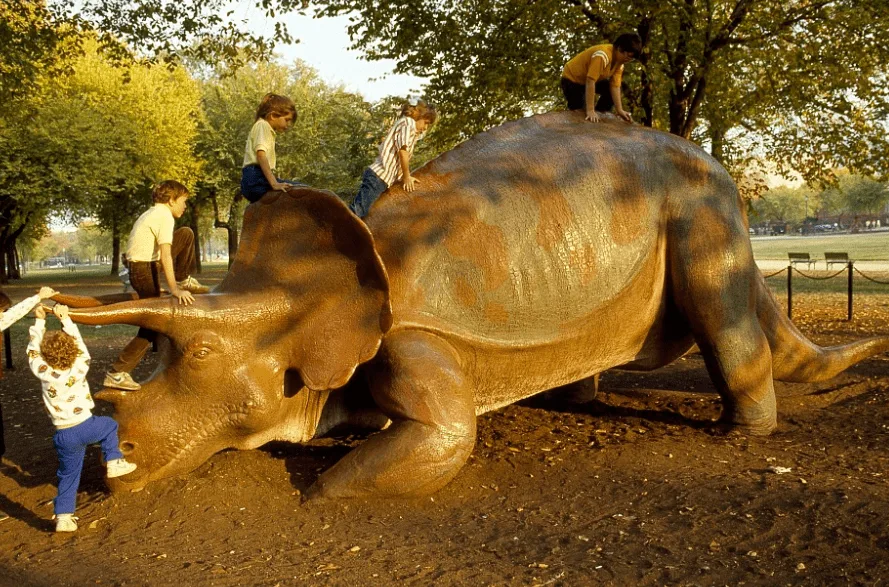
11. The American elm trees are very resilient
American elm trees were an important aspect of the McMillan plan as a total of 4 rows of this type of tree was integrated into it.
The first trees were planted in the 1930s and this was about the moment that the Dutch Elm Disease (DED) began to appear in the United States.
A lot of measures have been taken to avoid that the trees that would succumb to the DED, and in the many decades that followed, the population of American Elm trees in the National Mall remained intact.

12. The National Mall is popular for rallies and protests
The National Mall is perfectly located to serve as a site for big rallies, demonstrations, and protests.
The largest ever recorded rally on the grounds of the National Mall was the Vietnam War Moratorium Rally which was held on October 15, 1969. It’s estimated that millions of people attended the protest that day.

13. One of the most memorable moments in history happened here
For many people, it remains one of the most memorable moments in the history of the United States.
The National Mall is the location of the 1963 March on Washington for Jobs and Freedom, a political rally during the Civil Rights Movement.
This was the rally in which Martin Luther King Jr. gave his most famous speech referred to as the “I have a dream” speech.

14. It’s also the location for presidential inaugurations
The National Mall is also the location where the new president of the United States gets inaugurated.
Millions of people pack the park during the ceremony, and during the first inauguration of Barack Obama in 2009, the entire National mall was opened for the public. The immense park was too small for the huge number of people that wanted to witness this moment.
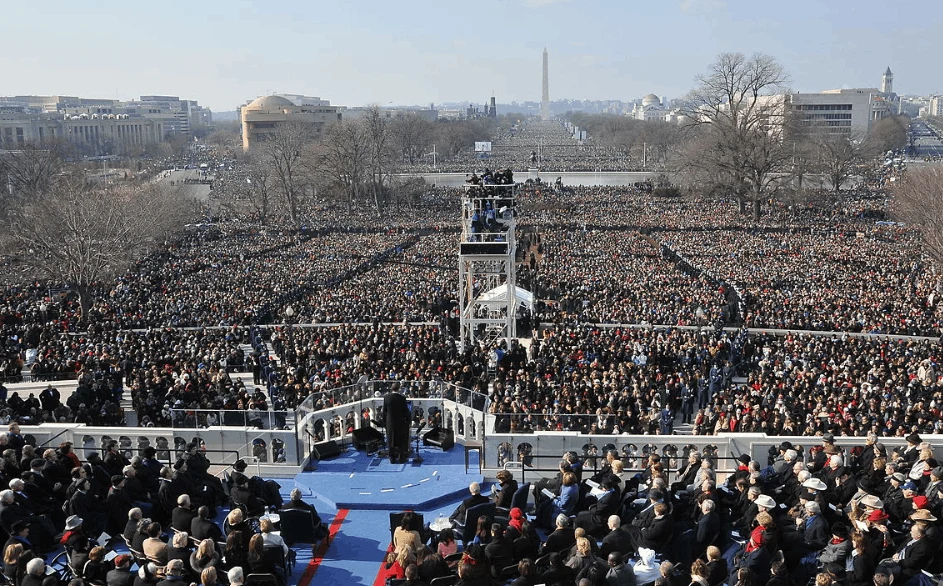
15. It’s important during Independence Day
Rally and presidential inaugurations aren’t the only time that the national Mall is packed with people. On the 4th of July, Independence Day, a huge number of people gather to celebrate the National Holiday in the United States.
Between the Lincoln Memorial and the Washington Monument, there’s an amazing fireworks display in the evening after a day of the “A Capitol Fourth concert.“
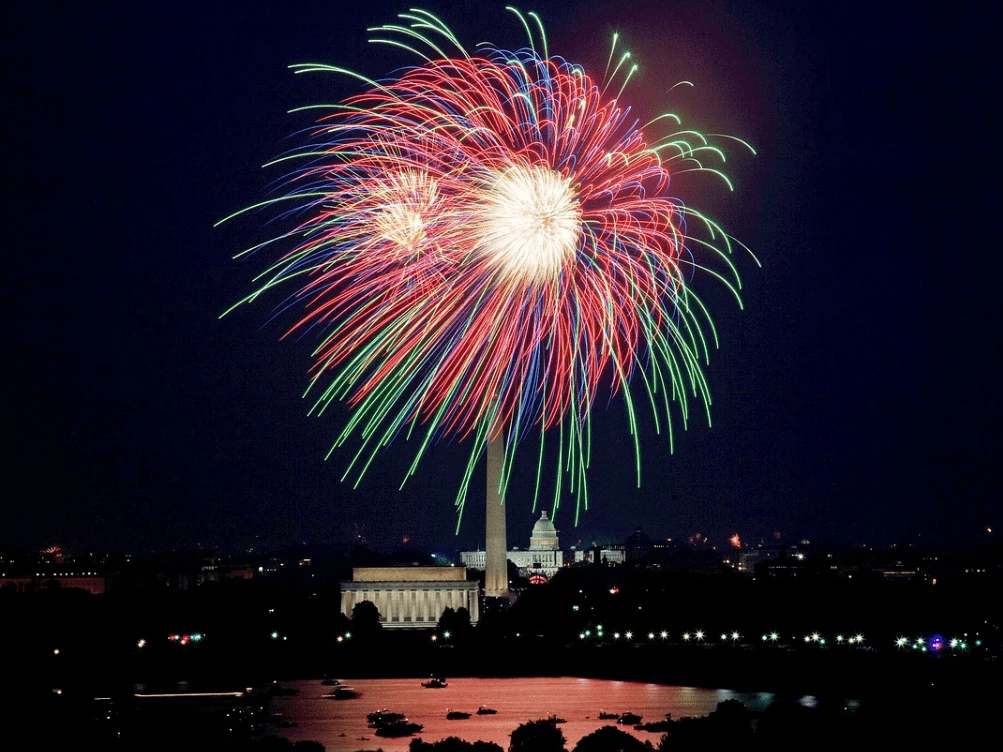
16. The reflecting pool was completely reconstructed
Believe it or not, but the reflecting pool in the center of the National Mall actually got its water from the same pipes as those of the citizens of Washington D.C.
This means a whole lot of drinking water was being used to fill the enormous reflecting pool every day.
In 2010, a reconstruction project started which was completed in 2012. The reflecting pool is now filled with filtered water from the nearby Tidal Basin, a man-made reservoir.
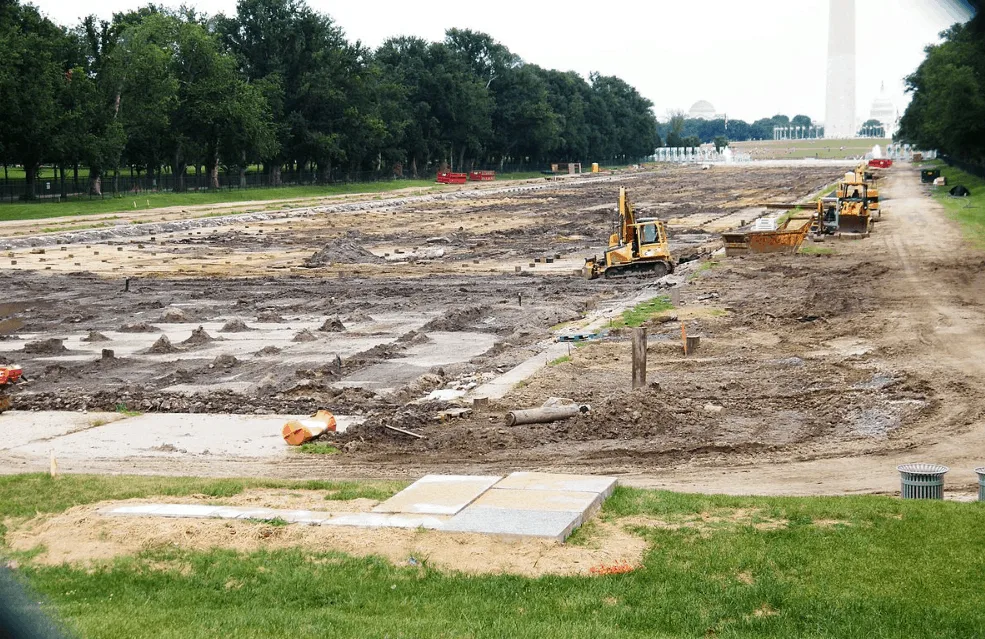
Quick facts about the National Mall
17. The National Mall receives a total of 24 million visitors a year.
18. The length of the National mall is about 1.9 miles (3 km) between the Capitol Building to the Lincoln Memorial.
19. The Washington Monument stands closer to the Lincoln Memorial (1.2 miles / 1.8 km) than to the Capitol Building (0.7 miles / 1.2 km).
20. The total area that the National Mall covers is about 309.2 acres (125.13 ha), measured from the Lincoln Memorial to the Ulysses S. Grant Memorial in front of the Capitol Building.
21. There are a total of 55 icons, museums, memorials, and other attractions located in the National mall and Downtown Washington D.C. area.
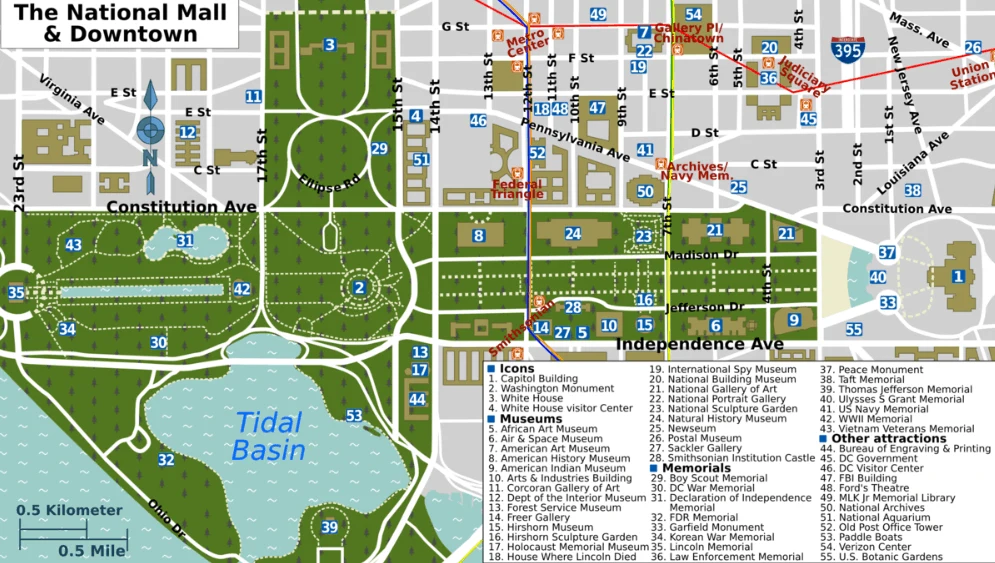
22. The National Mall has been registered on the National Register of Historic Places since October 15, 1966.
23. Visiting the National mall and any of the sites within the National Mall and Memorial Parks is completely free.
24. In the National Mall area, apart from all the monuments and landmarks, there’s a variety of entertainment venues such as a golf course, a tennis club, paddle boats on the Tidal Basin, an aquatic center, and fishing activities.
25. The ultimate goal of the National Mall is to:
Provide a monumental, dignified, and symbolic setting for the governmental structures, museums, and national memorials as first delineated by the L’Enfant plan and further outlined in the McMillan plan.
Purpose of the National Mall
